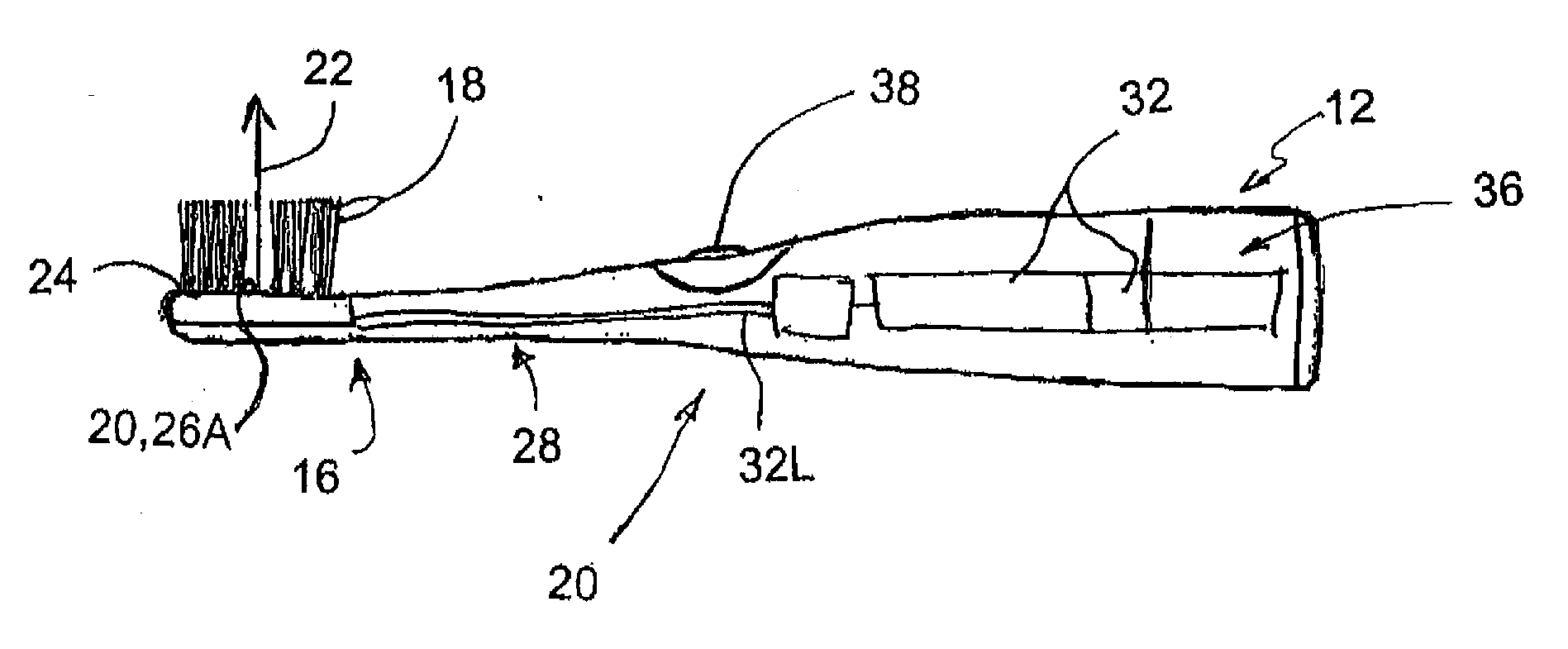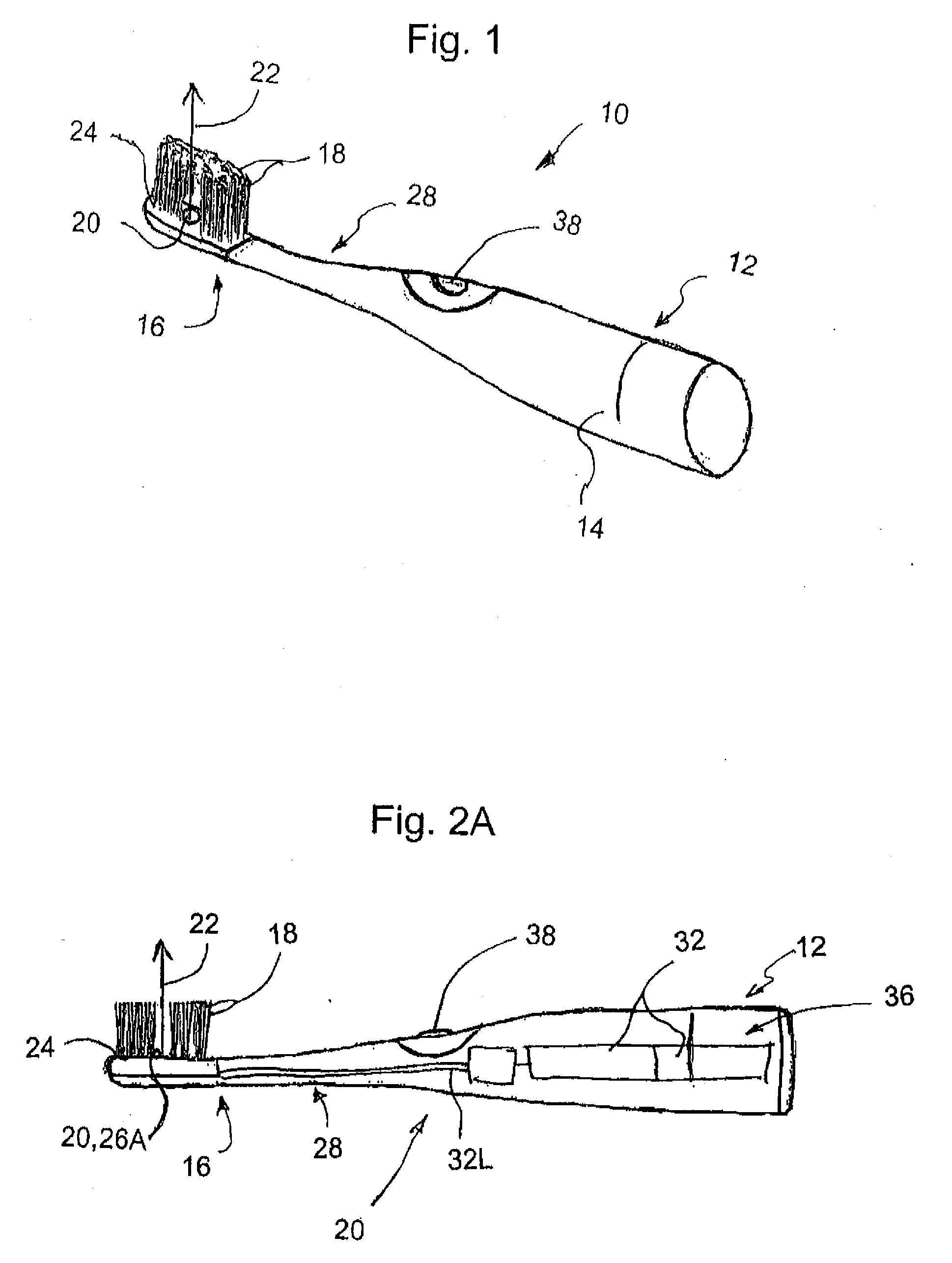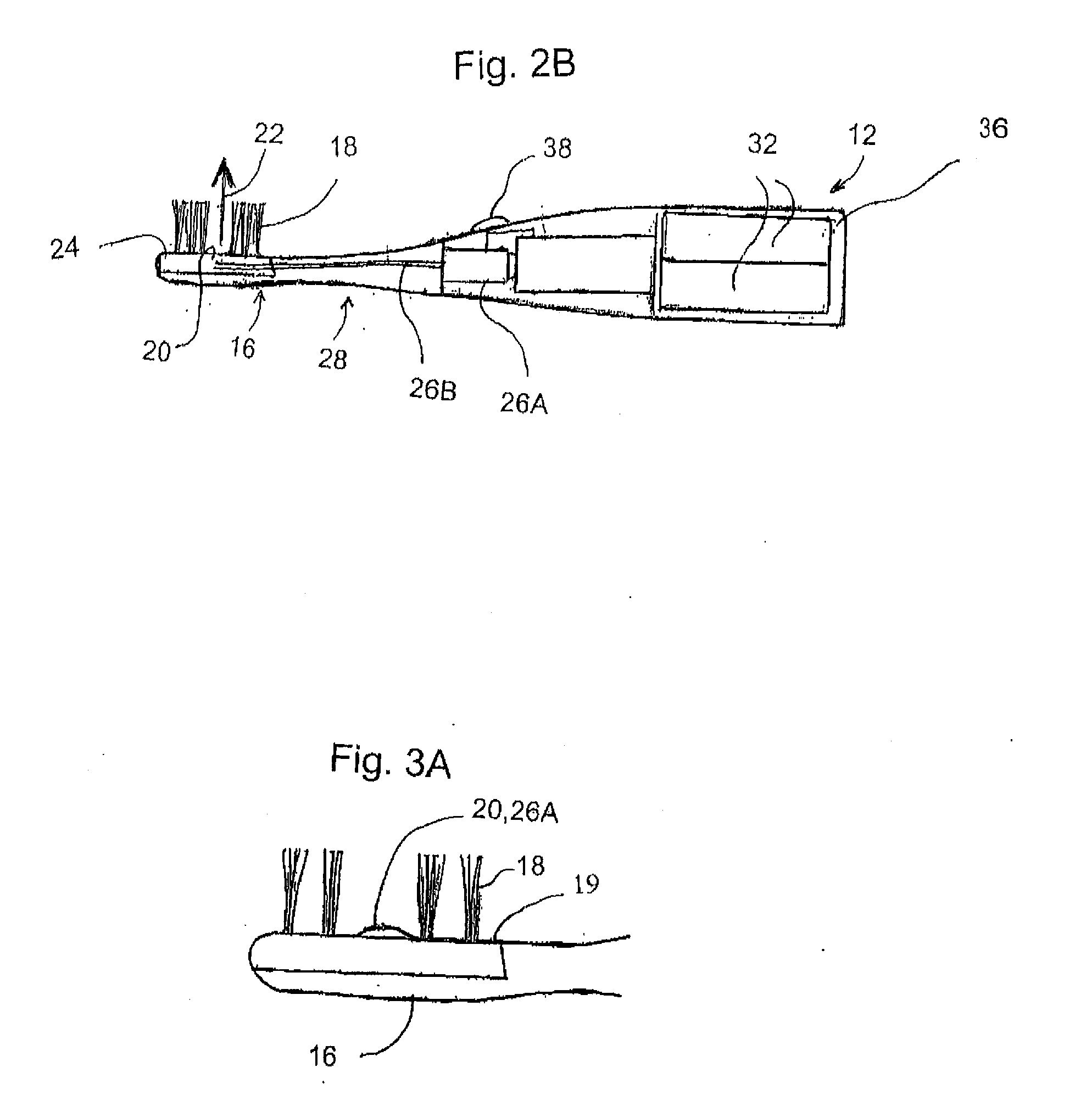Photocatalysis process toothbrush
a technology of photocatalysis and toothbrushes, which is applied in the field of dental hygiene, can solve the problems of difficult to determine the direction or aimed of the emitted uv beam, the potential hazards of such devices, and the uv photocatalytic toothbrushes which are marketed to consumers, etc., and achieves the effects of convenient recharge or replacement, low manufacturing cost, and low cos
- Summary
- Abstract
- Description
- Claims
- Application Information
AI Technical Summary
Benefits of technology
Problems solved by technology
Method used
Image
Examples
Embodiment Construction
[0041]Turning now to FIG. 1, a diagrammatic representation of a toothbrush 10, according to the present invention, is shown. As illustrated therein, the toothbrush 10 includes a handle 12 having a grip 14 at its proximal end to be held in the user's hand while using the toothbrush 10 and a brush head 16, typically including one or more groups of bristles 18, located at the distal or working end of the handle 12. As also illustrated in FIG. 1, the head 16 further includes one or more violet light emitters 20 that emit violet light 22 in the 410 nm+ / −10 nm (nanometer) wavelength band, that is, in the wavelengths generally between 400 nm and 420 nm and at an average power level of less than 5 watts. Preferably the violet light has an average power level of between about 0.25 and about 1 watt and more preferably an average power level of between about 0.5 and about 0.95 watts. The inventors have found that emitting violet light within this wavelength is highly effective in destroying po...
PUM
| Property | Measurement | Unit |
|---|---|---|
| wavelength band | aaaaa | aaaaa |
| average power | aaaaa | aaaaa |
| frequency | aaaaa | aaaaa |
Abstract
Description
Claims
Application Information
 Login to View More
Login to View More - R&D
- Intellectual Property
- Life Sciences
- Materials
- Tech Scout
- Unparalleled Data Quality
- Higher Quality Content
- 60% Fewer Hallucinations
Browse by: Latest US Patents, China's latest patents, Technical Efficacy Thesaurus, Application Domain, Technology Topic, Popular Technical Reports.
© 2025 PatSnap. All rights reserved.Legal|Privacy policy|Modern Slavery Act Transparency Statement|Sitemap|About US| Contact US: help@patsnap.com



